
READ MORE: 2021 Film & Video Production Survey (Altman Solon)
The relaxation of pandemic restrictions has released the brakes on film and TV production but capacity on traditional sound stages is a major bottleneck. The solution is greater and sustained use of virtual production, a suite of techniques and technologies which will eventually work to drive down costs and fuel wider adoption in a virtual cycle which will see it become integral to content creation.
Those are the broad conclusions of a new global film & video production survey compiled by consultancy Altman Solon. It highlighted the emergence of virtual production capabilities, the adoption of cloud-based post-production tools, and the reliance on remote collaboration solutions.
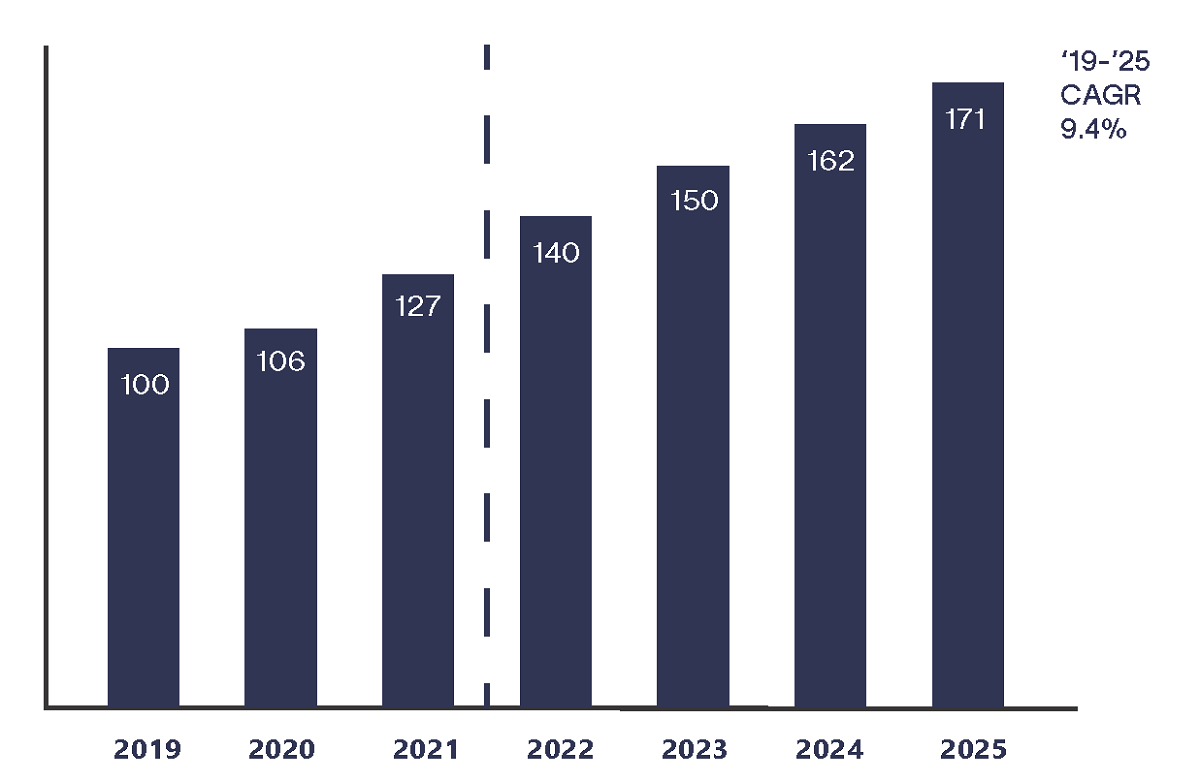
Altman Solon’s analysis suggests that as the backlog in production work created by COVID has exacerbated soundstage capacity constraints. It identified that only 8% of the projects that were put on hold during the pandemic in 2020 were developed last year. A remaining 30% of projects were still in “idle mode” at the time of this survey and are being pushed into 2022, creating a snowball effect of upcoming productions.
“Studios have ramped up efforts to purchase real estate and build new soundstages to keep up with demand,” it states. “While traditional production centers are still critical to meeting future needs, the backlog — along with the content production explosion — has pushed virtual production capabilities to the fore.”
Virtual productions allow filmmakers to reduce production length through real-time editing and decrease the logistical challenges of needing full production crews on set. Some 42% of survey respondents from companies with over $100 million in revenue are anticipating using VP tools in the next 18-24 months.
Nearly 75% of survey respondents agreed that the use of virtual production capabilities will not only increase, but also start to become integrated into production schedules to reduce production cycle times and costs, reflected in their anticipated post-pandemic investment decisions.
The global virtual production market is expected to grow at a CAGR of 16.7% from 2021 until it reaches $4.7 billion in 2028, the report states.
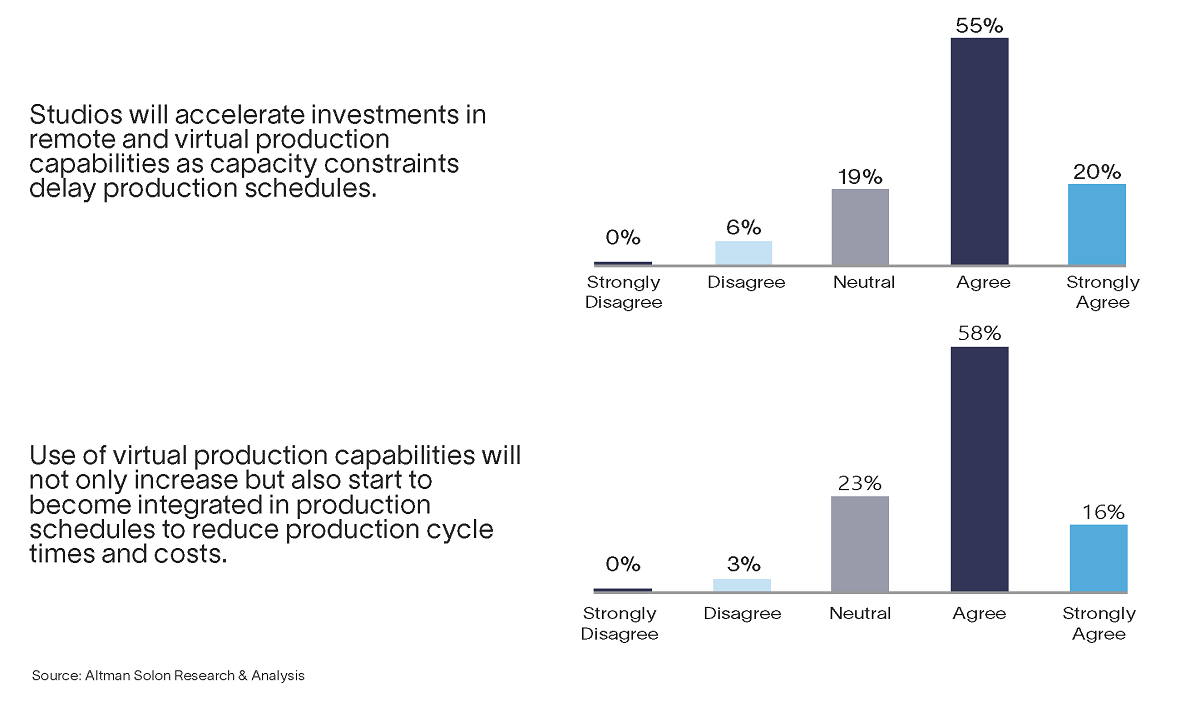
However, questions still linger for content producers. Early adopters of VP technologies are likely to incur higher initial capital costs, but waiting to integrate these capabilities comes with alternative challenges.
The pace at which technology evolves will make reskilling, business case development, and change management difficult for later adopters, the report finds. Consolidation and new market entrants are likely to shape the future of the production technology sector and adoption patterns, amid a fragmented market lacking process standardization.

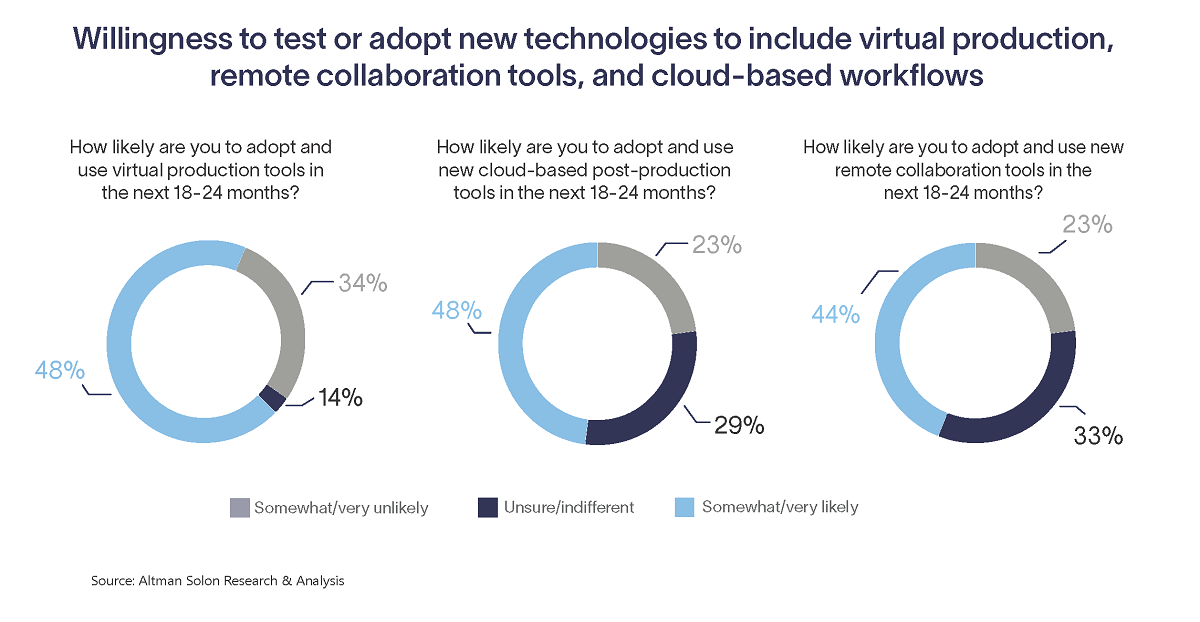
As virtual production adoption improves, scale economies will (eventually) drive production costs down and process efficiencies will result in even shorter and less expensive productions.
However, the lack of experts in VP is posing a challenge to adoption and impacting the change management support that would be required to get an entire production on board.
“The focus of content-hungry streaming services on prioritizing shorter production cycles may accelerate adoption and efficiency by exposing more industry professionals to these tools,” suggests Altman Solon. “As studios and creators weigh their comfort level with new technologies, virtual production will drive higher capital costs for early adopters. For later stage adopters, education and business case development will be a priority given the rapid changes to technology and processes.”
NAB Show Session: Merging Reality with Fantasy: Virtual Production and Visual Effects on HBO Max’s “Our Flag Means Death”

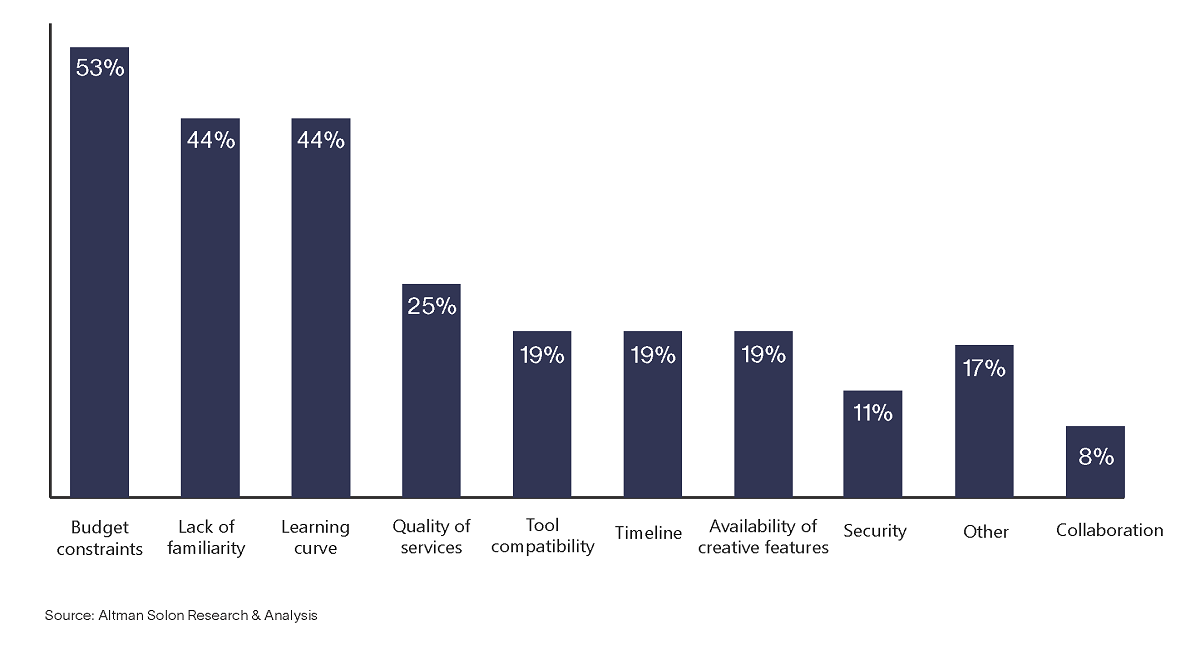
The demand for content is accelerating with global content spend forecast to increase to $330 bn by 2027, growing at a CAGR of 7% from 2022.
“On top of the billions more in new content from streamers, movie studios, and cable and broadcast networks, the industry cannot accommodate nor sustain the level of demand for production facilities,” the consultants find. “Existing backlog coupled with an increased appetite for original content is putting the spotlight on improving operational efficiency through the adoption of new technologies and innovative solutions.”
In short, familiarity with new technology and budget constraints, the two biggest hurdles in the use of virtual production tools, are also the first hurdles to be overcome as VP benefits from economies of scale. Production crews will need some time to reskill and gain experience with new processes before there are enough virtual production resources available for new content.
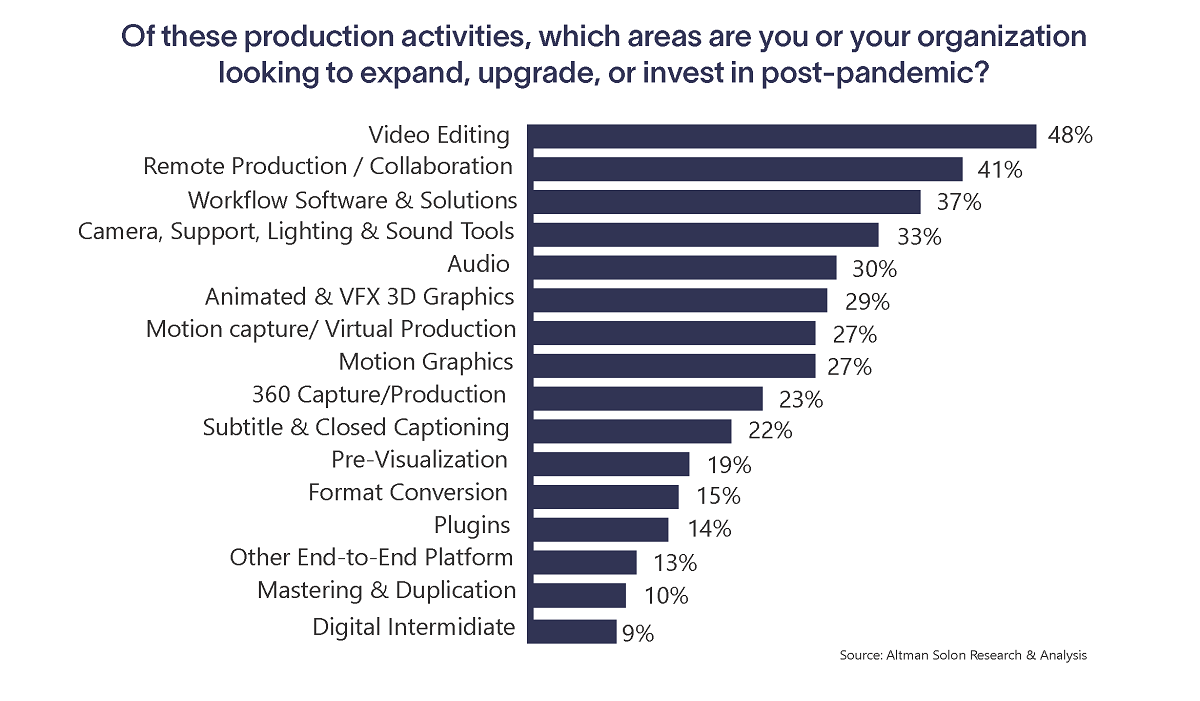
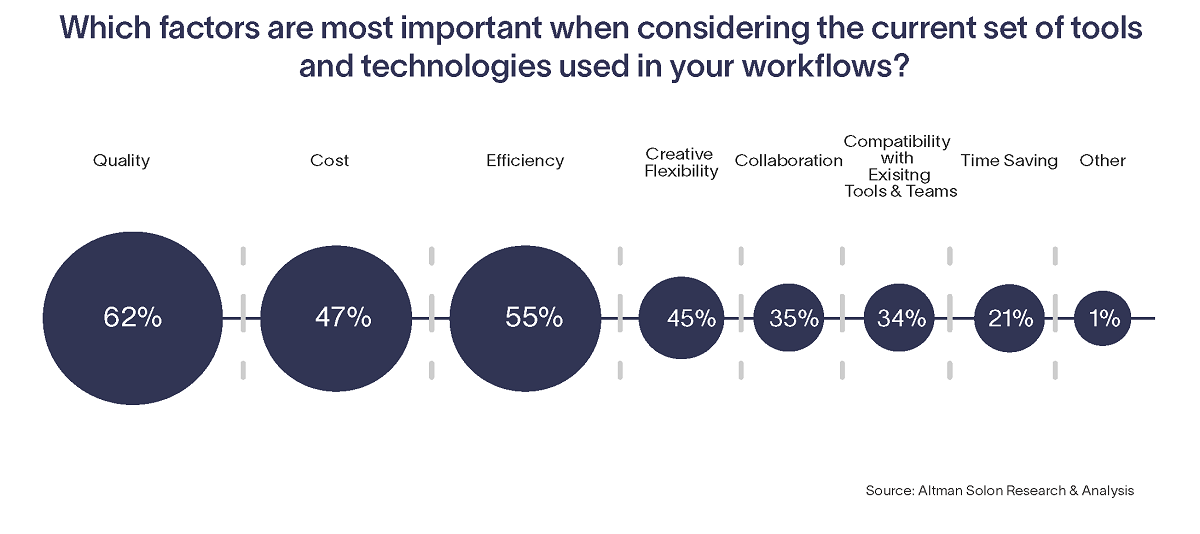
READ MORE: 2021 Film & Video Production Survey (Altman Solon)
Understand the ABCs of Virtual Production with The Virtual Production Glossary
Virtual production techniques and technologies have taken Hollywood by storm, making VP the single hottest topic for everyone from broadcasters, studios and streamers to independent production and post-production facilities. Get a handle on virtual production techniques and terminology with The Virtual Production Glossary, which was made possible with the support of the Visual Effects Society, the American Society of Cinematographers, Epic Games, and Netflix.
Designed to document terminology, definitions, and describe roles actively used in virtual production, The Virtual Production Glossary was written and edited by Noah Kadner, Addison Bath, Michael Keegan, David Morin, Miles Perkins, Ben Schneider, and Sebastian Sylwan, VES, and was created with the input of numerous industry professionals who generously provided their time and expertise, including Ben Grossmann, Casey Schatz, Girish Balakrishnan, Matt Rank, Adam Davis, Brittany Montero, Curtis Clark, ASC, Stephen Rosenbaum, Dane Smith, John Refoua, ACE, Kim Richards, Matt Madden, Michael Goi, ASC, Phil Galler, Rob Legato, ASC, Susan Zwerman, VES, Wyatt Bartel, Fae Corrigan, Vlad Bina, Steve May, Haarm-Pieter Duiker, Fernando Rabelo, Rhiannon Murphy, and Heather McCann.
In addition to providing an alphabetical list of terminology, The Virtual Production Glossary is also searchable by category, including Cinematography, Editorial, Volume Operations, and VFX.
The database of virtual production terms contained in the glossary is made available under the Creative Commons CC-BY-4.0 license. You can download a handy PDF version of The Virtual Production Glossary HERE, and guidelines for submission of entries and additional feedback can be viewed HERE.




